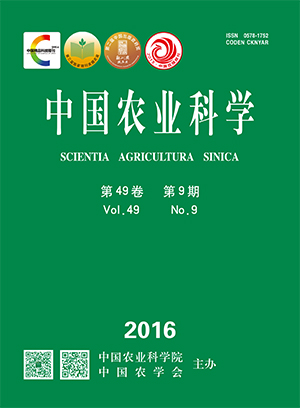-
Establishment of a Viscosity Reduction Process by Enzymatic Pretreatment and Its Application in Ethanol Fermentation from Fresh Sweet Potato Without Adding Water
- YUE Rui-xue, NIU Fu-xiang, SUN Jian, XU Fei, WANG Hong-yun, ZHU Hong, ZHANG Yi
-
Scientia Agricultura Sinica. 2016, 49(9):
1757-1766.
doi:10.3864/j.issn.0578-1752.2016.09.012
-
 Abstract
(
486 )
Abstract
(
486 )
 HTML
(
12 )
HTML
(
12 )
 PDF (404KB)
(
345
)
PDF (404KB)
(
345
)
 Save
Save
-
References |
Related Articles |
Metrics
【Objective】 The objective of this research was to establish a viscosity reduction process for fresh sweet potato (FSP) mash by enzymatic pretreatment before liquification and use it for direct ethanol fermentation from FSP without adding additional water. 【Method】 A total of 12 kinds of starch-type sweet potatoes (SP), widely cultured in China, were selected for this research. The main components of SP, such as dry matter, starch, protein, soluble sugars, pectin, hemicellulose, cellulose, and lignin, were detected and the correlation between these components and viscosity of FSP were analyzed. Based on the results, proper enzymes, cellulase and pectinase, were selected for viscosity reduction. Effects of some key factors of enzymatic pretreatment on viscosity reduction were investigated, including the ratio of substrate to water (1:0, 2:1, 3:2, 5:4, and 1:1), enzymatic pretreatment time (1, 2, 3, 4, and 5 h), enzymes doses (cellulase: 1.0, 1.5, 2.0, 2.5, and 3.0 GCU·g-1 and pectinase: 1.0, 1.5, 2.0, 2.5, and 3.0 U·g-1), and enzymatic pretreatment temperatures (30℃, 40℃, 50℃, 60℃, and 70℃). The optimum enzymatic pretreatment conditions were determined by orthogonal experiment design and the effects of enzymatic pretreatment on the following ethanol fermentation performance from FSP were also investigated. 【Result】 For 12 kinds of tested starch-type sweet potato varieties, except for hemicellulose (r=-0.239) and lignin (r=-0.069), all the components were positively correlated to the viscosity (dry matter content, r=0.356; starch, r=0.211, soluble sugar, r=0.307; protein, r=0.266; pectin, r=0.526; cellulose, r=0.600). Wherein the pectin (P<0.01) and cellulose (P<0.05) were significantly positively correlated to the viscosity. According to the range analysis, the factors affecting enzymatic treatment effects from high to low were enzyme dosage, the ratio of substrate to water, enzymatic treatment time, and temperature. Based on the experiment results and the consideration on the industrial application, the optimum enzymatic pretreatment conditions were determined as: the ratio of substrate to water 1﹕0, cellulase 1.5 GCU·g-1, pectinase 1.5 U·g-1, and 50℃ for 3 h. Besides Wansu 178, mash viscosity from other varieties after enzyme treatment was lower than 3 000 cp, and the viscosity reduction rate was 95.07%-99.31%. At the end of fermentation, the ethanol concentration from 11 kinds of SP varieties was higher than 12% (v/v), and the fermentation efficiency of 9 varieties reached more than 90%. 【Conclusion】 Pectin and cellulose are the main factors affecting the viscosity of SP mash. Fresh SP mash can be directly used for ethanol fermentation after enzymatic pretreatment without adding water.









